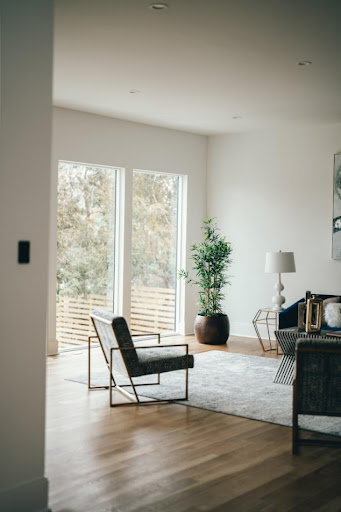If you want to keep your carpets looking and feeling great, carpet padding is essential. It provides cushioning for the soft part of the carpet, preventing it from becoming crushed when someone steps on it. But did you know that there are many types of carpet padding? Different materials provide unique benefits and drawbacks depending on where they’re used, how much weight they have to support, or the aesthetic look the user wants. In this blog post, we’ll discuss all of these factors so that you can make a well-informed decision regarding which type of pad is best for your home.

Bonded urethane
Rebond carpet pads, also known as bonded urethane and bonded polyurethane, are a top option for residential carpets. You’ve likely seen rebond carpet padding before. It’s made of multicolored recycled foam pieces connected together.
Rebond carpet padding offers durability and holds up to frequent traffic without the higher price tag of frothed foam pads. The padding tends to last 10 to 15 years, the same as most carpets.
Before buying rebond carpet padding, ensure your carpet warranty allows for rebond padding. Most carpets accept rebond, though some call for fiber or flat rubber padding, such as loop carpets and Berber carpets. Source: Angi
Memory Foam
Like a memory foam mattress, memory foam padding is comfortable and soft. Since memory foam is thick, it insulates and soundproofs your home. Memory foam cushions your feet and bounces back to shape after impact.
Due to its slippery nature, memory foam is not ideal for hallways or other high-traffic areas. You can place it under your living room carpet, dining, or humid areas. Source: Homedit
Flat Rubber
Flat rubber has long been considered the premium carpet pad. Though composed of the same material as waffle rubber, flat rubber padding requires no molding and no air pockets in its production. The pads are solid and heavy in weight, so they aren’t as soft as some pads. But they are long-lasting and give the carpet good support.
Flat rubber is an excellent pad for high traffic areas in your home. It resists furniture indentation and will not bottom out under heavy use. It’s a good choice for hallways, stairs and other areas that need to stand up to a lot of wear and tear.
Flat rubber does not need to be as thick as other pads to provide adequate cushioning. Source: Home.HowStuffWorks
Still can’t decide which one is best for your floor? Call us! We’d be more than happy to help you pick one that suits your budget and needs.


